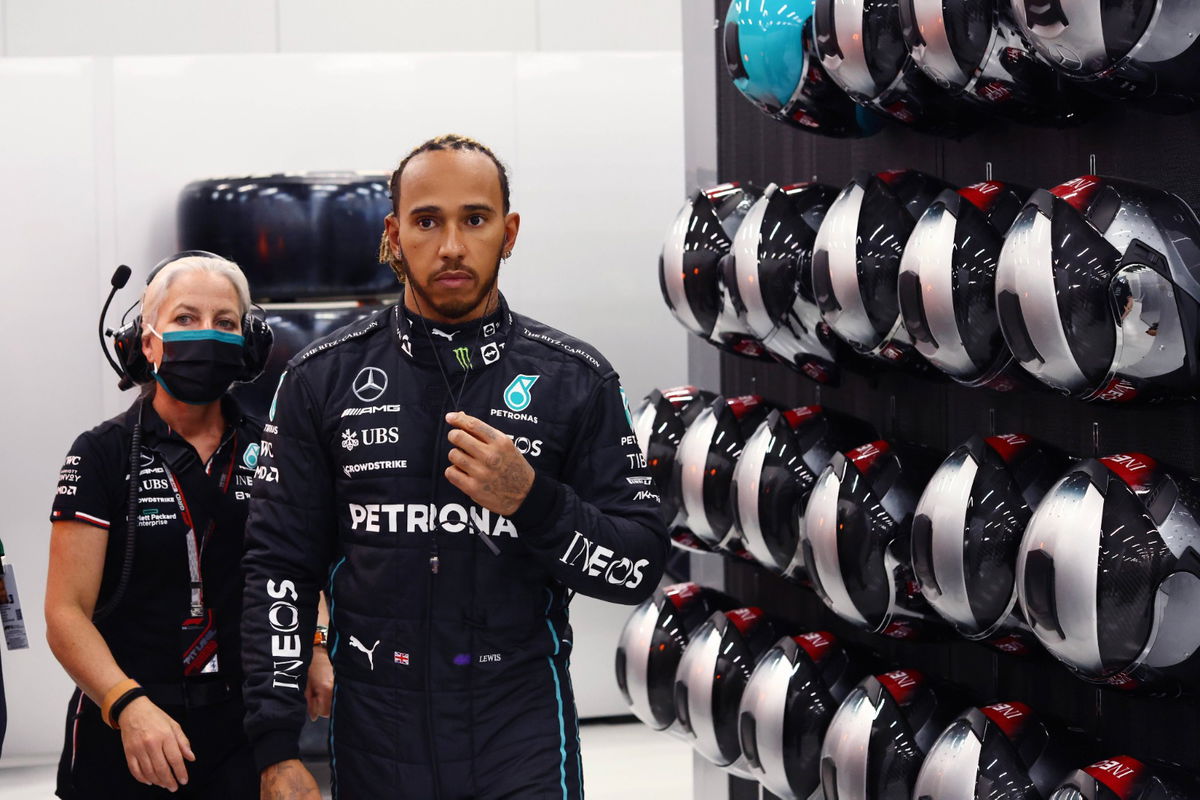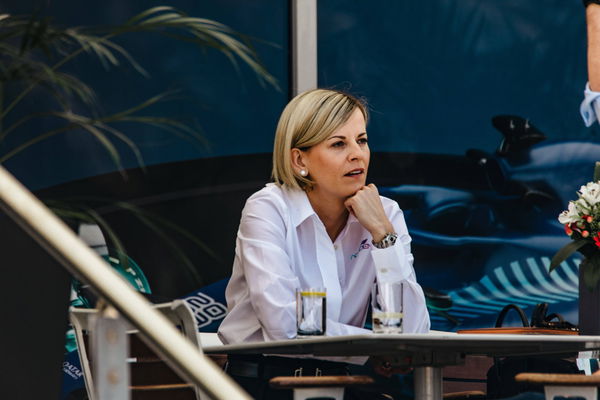
Imago
Formula 1 2022: Saudi Arabian GP JEDDAH STREET CIRCUIT, SAUDI ARABIA – MARCH 25: Sir Lewis Hamilton, Mercedes-AMG and Angela Cullen, Physio for Lewis Hamilton during the Saudi Arabian GP at Jeddah Street Circuit on Friday March 25, 2022 in Jeddah, Saudi Arabia. (Photo by Steve Etherington / LAT Images) Images) PUBLICATIONxINxGERxSUIxAUTxHUNxONLY GP2202_170619SNE41100

Imago
Formula 1 2022: Saudi Arabian GP JEDDAH STREET CIRCUIT, SAUDI ARABIA – MARCH 25: Sir Lewis Hamilton, Mercedes-AMG and Angela Cullen, Physio for Lewis Hamilton during the Saudi Arabian GP at Jeddah Street Circuit on Friday March 25, 2022 in Jeddah, Saudi Arabia. (Photo by Steve Etherington / LAT Images) Images) PUBLICATIONxINxGERxSUIxAUTxHUNxONLY GP2202_170619SNE41100
While the Drive to Survive revolution had a charitable intent for Formula 1 with intentions of increasing its popularity, it has clearly made a blunder on another front. Sexism 101 can be a well-suited tagline for the Netflix docuseries. The two contrasting spectrums of the sport appear as, on one hand, we have a cheerleader in Lewis Hamilton, the most decorated driver in Formula 1 history, and, on the other, the severe lack of women’s representation. In a sport where the doors are open to men and women competing as equals, equality seems shy in representation, even off-track. And the latest example of that is the ignorance of the ‘revolutionary’ Drive to Survive makers.
Watch What’s Trending Now!
The new season which was being sold as the best one yet has a sorry state of affairs when it comes to women. The female representation not being manifested on track is a plaguing issue that perhaps can be combated with the F1 driver’s academy initiative. However, what is the excuse for not having women on a show where there are no such barriers affecting their presence? F1 journalist Jennie Gow has significantly less screen time than her counterpart, Will Buxton.
ADVERTISEMENT
In the VF1 Show podcast, VF Castro, a Harvard alumnus, and F1 journalist chimed in to rue over the sorry state of affairs. She says, “I think the females in motorsports survey was just very eye-opening. It said women spoke for just 1.54% of the season five run time.”
ADVERTISEMENT
She goes on to add why women who are not getting a seat at the F1 or ancillary tables have taken it into their own hands. She says, “So when we think about the fact that content creators are increasingly women and this isn’t just women talking about, “oh that driver is really cute” or ” of I love that driver’s hair” this is content creators really getting in there and getting dirty and understanding the technology and understanding what is going on beyond the car beyond the garage.”
“They are understanding the technology in a way that they can really add value as storytellers. How did this come to be? Why is this here? What does this do to increase the car’s aerodynamics? They are so involved in talking about every single component of cars.”
ADVERTISEMENT
While the state of affairs is in tatters, looking at the glass half full, we have Susie Wolff now in an influential position at the women-centric F1 initiative.
ADVERTISEMENT
Susie Wolff doesn’t want history to repeat itself.
Susie Wolff drove for the iconic team Williams, but only as a reserve driver. While many argue that she should have been given an opportunity to drive instead of Felipe Massa, the history books will always state that a woman who made her way to F1 still wasn’t completely a part of it. But now, as Wolff joins in as the director of F1 Academy, she hopes for a better future for the future generation.

Imago
Formel 1 GP Bahrain. Freitag 03.03.2023 Susi Wolff Formel 1 GP Bahrain. Freitag 03.03.2023 *** Formula 1 GP Bahrain Friday 03 03 2023 Susi Wolff Formula 1 GP Bahrain Friday 03 03 2023 Copyright: xBEAUTIFULxSPORTS/Erlhofx
Wolff said, “I’ve been in those shoes racing an international karting level wondering how am I going to make the step-up into junior formula because it is a huge step to make and that’s why I think F1 Academy will be a destination for those young girls,”
ADVERTISEMENT
She added, “I think the amount of track time, the fact that you’re with some of the top junior formula teams means that you’re on a great trajectory to starting your formula single-seater career and making the progression.”
Top Stories
How F1’s 2026 Engine Rules Sound Alarm Bells for NASCAR and Others? – Explained

Max Verstappen’s Siblings: Everything We Know About Victoria, Blue Jaye, Jason Jaxx, and Mila Faye

Who Are Lando Norris’s Parents? Meet Adam Norris and Cisca Wauman

Fans Expose Christian Horner’s Hypocrisy After He Aligns Motives With Lewis Hamilton’s Uplifting Mission

F1’s Champion Sponsor Joins SVG and Connor Zilisch With Bold 2026 Commitments

Watch This Story: Who is Angela Cullen? Fun facts about Lewis Hamilton’s blonde assistant!
Why do you think women have had such less representation in F1 and ancillary settings? Do you think it will change in the coming times?
ADVERTISEMENT
ADVERTISEMENT
ADVERTISEMENT
ADVERTISEMENT

